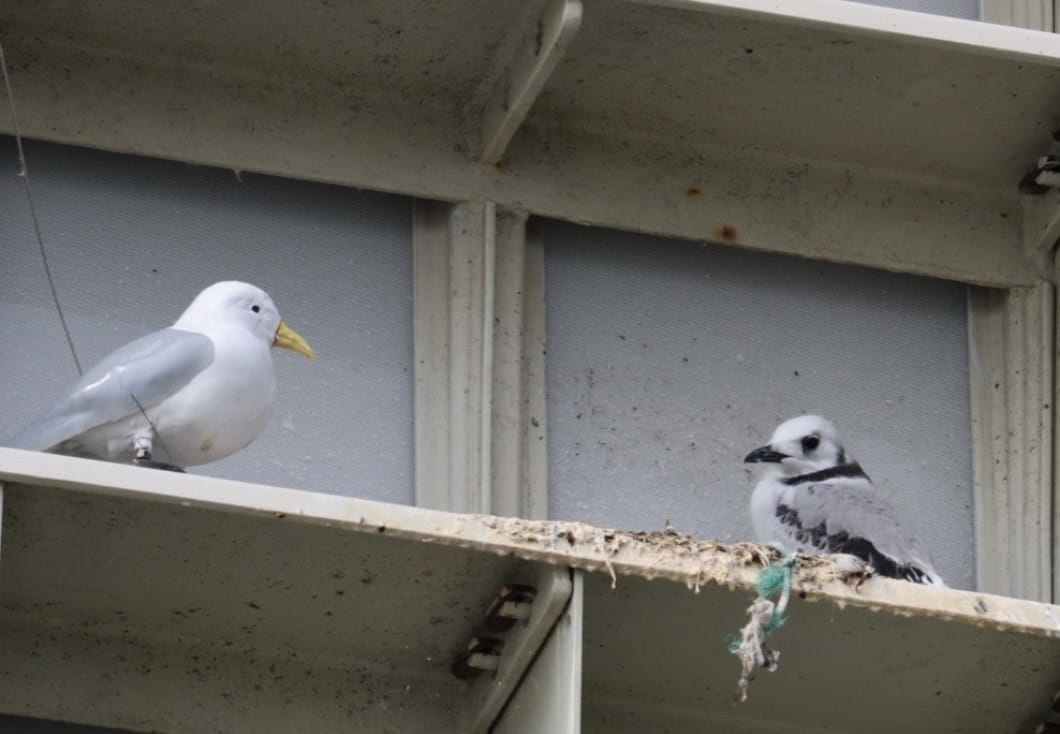
First kittiwake chick hatches at Ørsted’s artificial nesting site


Ornithologists from GoBe, part of global environmental consultancy APEM Group, had their first sighting of the chick thanks to the unique design of the structure which allows experts to view birds from inside without disturbing them. This is important for scientists to be able to monitor the progress of the kittiwake, an endangered sea bird.
These artificial nesting structures were built in Spring of 2023, with this year being the first official breeding season. The team was surprised but pleased that a chick has already been born as it can take several years for a colony to be established. They are hoping that this one chick marks the first baby steps towards a successful project.
The tiny bird represents the next stage in the journey following several years’ efforts. Ørsted will continue working towards its obligations to support and monitor the kittiwake population, compensating for potential impacts from the Hornsea 3 Offshore Wind Farm.
Each structure is octagonal and can house around 500 breeding pairs of kittiwake. The roof pitch and overhang were specifically designed to ward off avian predators.
The nesting faces have alternating rows of fully partitioned, open, and semi-partitioned ledges. This experimental design will provide valuable insight on the nesting preferences of kittiwake and help inform future compensation projects for the industry. Decoy kittiwake have been placed on the ledges on two out of three of the nesting structures to encourage real birds to visit.
Jess Westcott, Project Director at the Hornsea 3 Offshore Wind Farm, said: “We are thrilled to welcome the first kittiwake chick to our innovative artificial nesting site. It will require many more years of monitoring to see whether our plan results in whole kittiwake colonies, where these endangered birds can nest safely. Kittiwake need time to establish themselves but we hope that this is a first baby chick style step to success.”
ends
For more information, please contact:
Sarah Brown
External Communications Lead, Hornsea 3 Offshore Wind Farm
sarbr@orsted.com
+44 (0)7443 154180